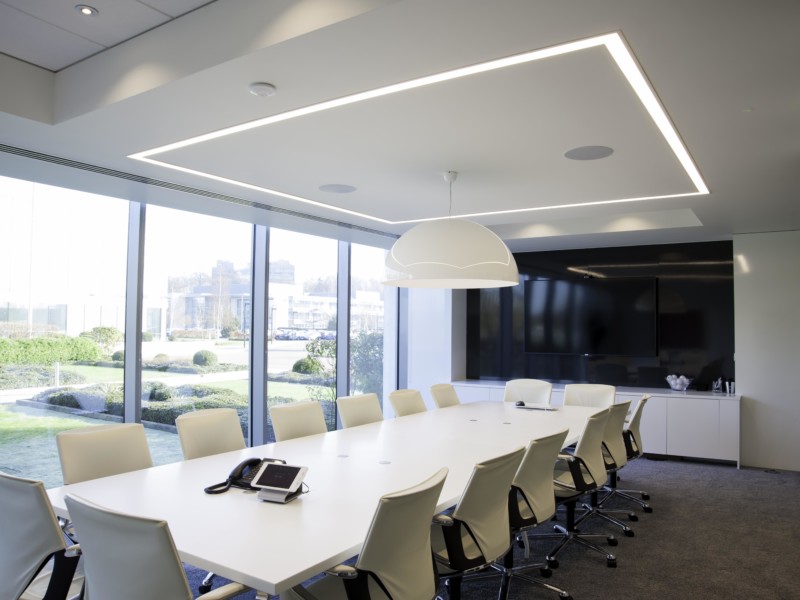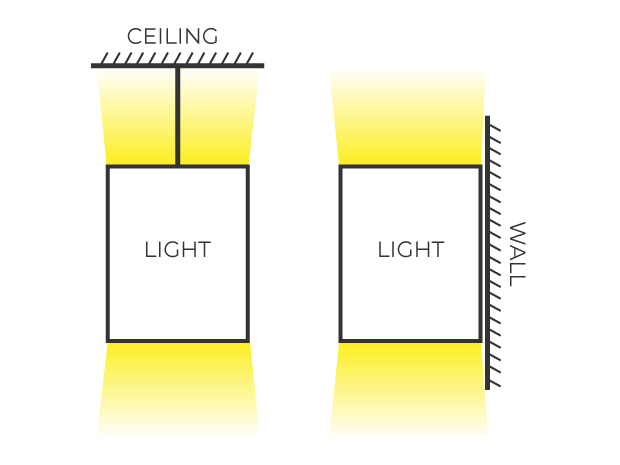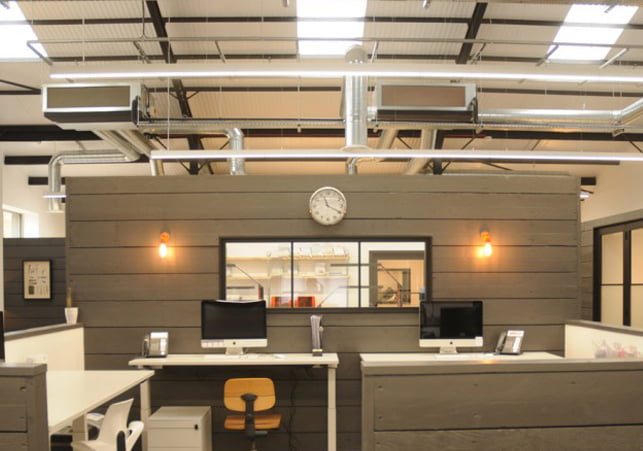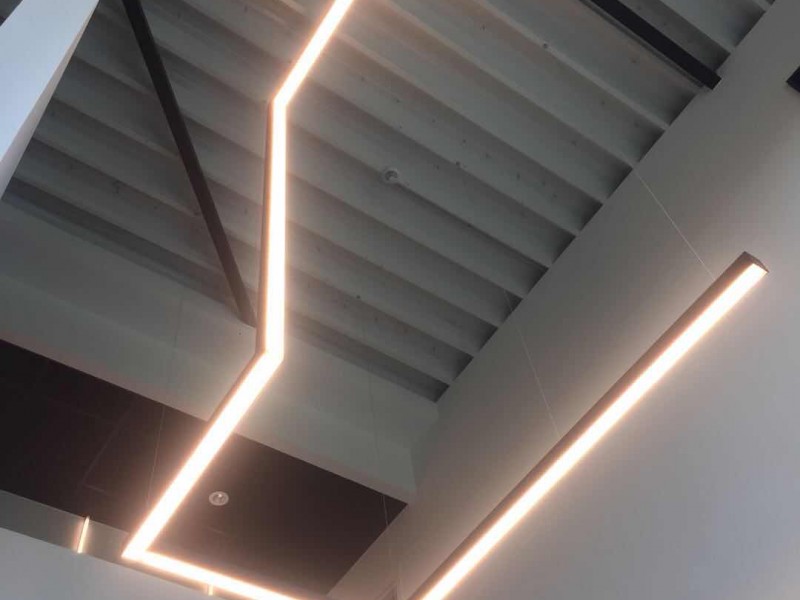 Free UK Delivery On Orders Over £120*
Free UK Delivery On Orders Over £120*
 Free UK Delivery On Orders Over £120*
Free UK Delivery On Orders Over £120*
 Secure Ordering
Secure Ordering
 Up To 5 Year Warranty
Up To 5 Year Warranty
 5* Service & Support
5* Service & Support
HOW DOES OFFICE LIGHTING AFFECT WORKER PRODUCTIVITY?
The office environment has a significant impact on an individual’s performance at work in a variety of ways. One of the most influential factors in the office environment is lighting. From concentration to satisfaction levels, studies have shown that an individual’s health, well-being and performance at work can change at the flick of a switch.
From eye strain to headaches, a worker’s health can be directly affected by poor lighting. However, it can also affect employees in more subtle ways. From wakefulness to contentment, well designed lighting does much more than address simple health and safety issues. Office worker satisfaction and subsequent productivity can be positively affected by well-designed lighting.
The following tips demonstrate how innovative and discreet design can improve and lighten your office atmosphere both literally and figuratively.
WHAT ARE THE WORKPLACE LIGHTING REGULATIONS?
Managing the above health and safety risks for employees is essential. When it comes to workplace lighting, there are regulations for new and existing buildings applicable to office spaces. Legislation governing office lighting is published by the Health and Safety Executive and covers health, safety and minimum illumination levels for the workplace.
The Society of Light and Lighting (SLL), part of the CIBSE (Chartered Institution of Building Services Engineers) provides the office lighting guide LG7. This comprehensive guide focuses on ensuring minimum lighting levels for the office space are met while providing a stimulating working environment at the same time.
The British Council for Offices (BCO) Guide to Lighting covers; Daylight and energy use, Visual comfort and performance and the use of artificial lighting, CAT A developer’s fit out and CAT B user fit out.
Office lighting ergonomics
Legislation covers the regulations but tends not to consider the creation of pleasant and thereby, performance-enhancing lighting. So, what type of lighting is best for offices? The following tips demonstrate how innovative and discreet design can improve and lighten your office atmosphere both literally and figuratively.
BUY NOW
View Our Office Lighting Range
INDIRECT OFFICE LIGHTING
There is no ‘one size fits all’ solution to office lighting. However, most organisations should consider investment in and installation of human-centric lighting, which can give a tangible return in terms of worker productivity.
Both natural daylight and artificial light play an important role in creating a healthier and more productive workplace. Different activities require different types and levels of light. While task lighting tends to be a given the most thought in modern office spaces, lighting arrangements for non-task areas, such as the use of linear lighting, are receiving more consideration too.
Consider creating a contrast between different areas of the office. Those spaces not utilised as workstations, such as walkways, could have a lower level of lighting. This contrast can create a more stimulating space and contribute to a more dynamic design.
OFFICE LIGHTING POSITIONING
Lighting position is also an important consideration, as light shouldn’t reflect directly into the eyes from surfaces or screens. Rather than uniformly illuminating an office environment, throwing light on to walls and ceilings will make the space seem larger, brighter and less claustrophobic.
Reducing glare & headaches from lighting
Glare can severely affect the quality of lighting in an office environment and is an extreme form of visual discomfort. It is a key factor when choosing LED office lighting. With an anti-glare, prismatic diffuser, LED lighting proves a popular choice for office spaces. Whether you prefer an LED panel configuration or a continuous LED linear lighting design, there are a variety of options available. The use of LED lighting gives more choice and flexibility than previous technologies.
Office lighting & colour temperature
Creating contrast with different levels of illumination will achieve a more dynamic space. Circulation areas don’t require the same level of lighting as workstations. Warmer lighting works well in break rooms and creates a relaxing atmosphere away from the cool, white light required for brain-storming and concentrating.
As light synchronises the circadian rhythm, a time-controlled lighting system can be used to vary the colour temperature and intensity of office lighting during the course of the day. High illumination levels and cool, indirect white light can be used during the morning and early afternoon to stimulate employees. At midday and during the late afternoon, the light levels can fall and become warmer. Artificial lighting should correspond to the colour temperature of natural daylight. The sky’s colour is cool during the morning and early afternoon but is much warmer at sunset. Lighting should also be adapted to the changing daylight hours of the different seasons.
Good office lighting should be energy efficient
While the individual comfort of employees is essential, there is still a high demand for energy efficiency. Any lighting installation needs to strike a balance between worker productivity and energy bills.
Reducing glare & headaches from lighting
Glare can severely affect the quality of lighting in an office environment and is an extreme form of visual discomfort. It is a key factor when choosing office lighting. With an anti-glare, prismatic diffuser, LED lighting proves a popular choice for office spaces.
LED office lighting and energy efficiency
Not only does LED lighting offer exceptional performance, but it’s also highly efficient, boasting low energy consumption and maintenance requirements. Minimising office overheads is a key concern. Therefore, choose your lighting solutions to help maximise energy savings. LED office lighting is up to 80% more efficient than fluorescent lights so can significantly reduce running costs.
In addition, intelligent lighting controls can offer an effective way to achieve further energy efficiency. Dimmable lighting offers a useful solution for your office. If your office benefits from plenty of natural light, dimmable lighting is ideal for use with daylight harvesting systems, as it can be programmed up or down to a maintained illumination level – therefore, contributing to energy savings.
Intelligent lighting offers a solution to energy efficiency and can be used in a variety of ways. One solution is to use daylight harvesting. This system incorporates controls that automatically adjust the light output to achieve the target level by sensing the amount of natural light in the room. Thereby, making the most of the available natural light and not wasting energy on unnecessary artificial light.
HOW DO I CHOOSE THE RIGHT OFFICE LIGHT?
When it comes to choosing the right office light, there are many considerations to take into account, as we’ve outlined above. The different areas of the working environment will require different office lights.
For example, a meeting room is likely to need a different style and type of lighting to a lobby or reception area, where you may want to create an eye catching and exciting first impression. In addition to primary office spaces, such as open plan offices, there are also refreshment areas, kitchens, archive spaces, stairs and corridors that require lights.
From recessed and suspended linear office lighting to emergency lighting and exterior lighting, at SERA Technologies we offer a vast range of products range of products for stylish and dynamic LED office lighting designs.
View Our Office Lighting Range
Intelligent lighting offers a solution to energy efficiency and can be used in a variety of ways. One solution is to use daylight harvesting. This system incorporates controls that automatically adjust the light output to achieve the target level by sensing the amount of natural light in the room. Thereby, making the most of the available natural light and not wasting energy on unnecessary artificial light.
From recessed downlights to suspended linear lighting, SERA Technologies offers products for stylish and dynamic LED office lighting designs.





